From Rifle Club to Extremist Gun Rights Lobby
How the National Rifle Association evolved from a Shooting Club to a Terrorist Organization
18 U.S.C. § 2331 of the US Legal Code defines “Domestic terrorism” as activities with the following three characteristics:
- Involve acts dangerous to human life that violate federal or state law;
- Appear intended (i) to intimidate or coerce a civilian population; (ii) to influence the policy of a government by intimidation or coercion; or (iii) to affect the conduct of a government by mass destruction, assassination. or kidnapping; and
- Occur primarily within the territorial jurisdiction of the U.S.
By those standards, it’s not much of a stretch to consider the National Rifle Association the leading domestic terrorist organization in the United States today.
In fact, the history of rifle clubs in America is closely associated with the Ku Klux Klan and other white-supremacist paramilitary organizations – such as the White League in Louisiana, the Red Shirts in Mississippi and myriad white-only rifle clubs – which used organized violence to turn Republicans (the anti-slavery party) out of office, repress and bar Black voting, and restore Democrats (the pro-slavery party) to power.
At its peak in the 1920s, the Ku Klux Klan boasted 4 million members (much like the NRA today), with a roster than included many “respectable” citizens such as business leaders, sheriffs, governors and US senators. And, much like today’s NRA “rifle club”, political pressure through intimidation was the dominant form of influence-peddling, which is central to the definition of terrorism.
This wasn’t always the case, however.
When Col. William C. Church and Gen. George W. Wingate founded the National Rifle Association in 1871, it wasn’t to lobby against gun control or protect Americans from government tyranny. Church, a former reporter for the New York Times, said the goal was to “promote and encourage rifle shooting on a scientific basis.”
Church and Wingate had fought for the North in the Civil War and were shocked by the poor marksmanship of Union soldiers who were more urban than their southern counterparts. They thought that a better trained citizenry would make a more effective military, and chose as the first NRA president General Abrose Burnside.
The NRA’s primary activity was holding target-shooting competitions, and the organization now famous for its rabidly anti-government rhetoric, received heavy subsidies from both the New York State Assembly to purchase land on Long Island for a rifle range and the US military which gave them surplus firearms and ammunition, sold 200,000 decommissioned WWI rifles at cost exclusively to NRA members, and for decades paid for an annual NRA-sponsored marksman competition at Ohio’s Camp Perry, home since 1907 of the National Matches, considered America’s “World Series of the Shooting Sports”.
NRA leaders wrote, and lobbied states to adopt, landmark gun control legislation in the 1920s and 1930s, based on the Uniform Firearms Act of Pennsylvania, that banned anyone without a permit and a “proper reason” from carrying a concealed gun in public. The model law also required a waiting period for handgun purchases and that sellers of handguns be licensed.
The NRA later supported the first significant gun control laws adopted by Congress – the National Firearms Act of 1934 and the Federal Firearms Act of 1938. These laws taxed certain “gangster” firearms heavily, required some gun owners to register their weapons, and created a licensing system for dealers sending guns across state lines.
When the NRA moved into new headquarters in 1957, its mission was displayed next to the main entrance: “Firearms Safety Education, Marksmanship Training, Shooting for Recreation”. As late as 1975, when the NRA put out an “NRA Fact Book on Firearms Control”, the organization believed that the Second Amendment was “of limited practical utility” as an argument against gun laws, and they seemed to believe that still in the 2000s when a small group of libertarian lawyers brought a Second Amendment case to the Supreme Court (more on that later).
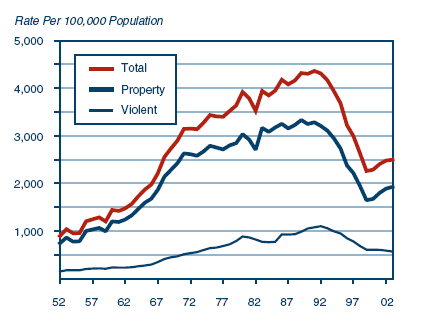 [For the real reason that crime rates soared in the 1960s and plummeted in the 1990s, see Lead, Crime & Societal Breakdown – A Cautionary Tale of Unintended Consequences]
[For the real reason that crime rates soared in the 1960s and plummeted in the 1990s, see Lead, Crime & Societal Breakdown – A Cautionary Tale of Unintended Consequences]
In the 1960s, the NRA’s membership began to change as a result of rising crime rates and an increasing proportion of its members buying guns for self-protection. The leadership at the time didn’t appreciate the importance of this shift until, in 1976, the executive vice president, a Mormon named Maxwell Rich, decided to move the NRA headquarters out of Washington DC and relocate to Colorado Springs in order to retreat from political lobbying and rededicate their mission to outdoorsman activities and conservation.
This plan sparked outrage from a growing body of staunch, hard-line gun rights advocates within the ranks. These dissidents were led by a bald-headed bulldog of a man named Harlon Bronson Carter, once nicknamed “Bullet-head”. Born in Granbury, Texas, the one-time home of Davy Crockett, Carter loved guns since childhood, was an excellent shot and would go on to win two national shooting titles and set 44 national shooting records. His most infamous shot, however, came at the age of seventeen when, in defense of his mother, he unloaded a shotgun into the chest of a knife-wielding Mexican teenager two years younger than himself. Carter had joined the NRA as a junior member just the year before.
Carter was convicted of murder, sentenced to a three-year prison term, and then allowed to walk free on appeal. It probably didn’t hurt that Harlon Carter’s daddy was himself a ranking Border Guard official. For years, Carter tried to keep the story secret, even claiming that it was another Harlon Carter who did the deed. But, by the time a Texas journalist dug the story out in 1981, it only served to cement his reputation among the diehards.
In the 1950s, as a Border Patrol agent, Carter led the corrupt Operation Wetback, bragging about keeping “subversives” out of the US.
To this new cadre of NRA extremists, guns weren’t just about tradition or hunting, but essential tools for the protection of personal liberty. Guns allowed people to fight back against what they believed to be encroachments on their freedoms, from crime to illegal immigration and government tyranny.
In 1976, Carter was the head of the NRA’s Institute for Legislative Action (ILA), which had been established just the year before on the advice of its allies in Congress. Its mission was to fend off gun-control legislation coming from both state and federal lawmakers. Maxwell Rich and the other NRA leaders treated the ILA like an unwelcome stepchild and limited its funding and operations.
When the NRA leadership became aware of the threat from Carter’s “Federation of the NRA”, they staged what became known as the “Weekend Massacre” in November of 1976, firing 80 employees associated with Carter’s new guard, including the entire staff of the ILA. For months, the Carter cadre secretly plotted their revenge and hijacked the NRA’s annual meeting in Cincinnati in May 1977 – the meeting which had been moved from Washington, DC, to protest its new strict gun control law.
Using the NRA’s parliamentary rules, the rebels interrupted the agenda from the floor and revised how the Board of Directors was chosen, recommitted the NRA to fighting gun control and restored the ILA. By 4 AM the next morning, Harlon Carter had became the NRA’s new executive director and his protégé, Neal Knox, was head of the ILA. Carter cancelled the planned move of the NRA national headquarters to Colorado Springs, and he changed the organization’s motto on its DC headquarters, selectively editing the Second Amendment to reflect a non-compromising militancy, “The Right Of The People To Keep And Bear Arms Shall Not Be Infringed.”
Immediately the announcement went forth: “The National Rifle Association is cutting back on its conservation and wildlife programs to devote most of its energies to fighting gun control.”
Carter was re-elected to lead the NRA in 1981. In 1982, Knox was ousted as director of the ILA but began mobilizing outside the NRA framework and continued to promote opposition to gun control laws. In Carter’s tenure as executive vice president from 1977 to 1985, the NRA’s chief operating position, the group’s membership more than tripled, to three million, and its annual budget multiplied several-fold, to $66 million. The organization’s influence with elected officials also soared.
With a goal to weaken the Gun Control Act of 1968 (which the old NRA had supported, as did America’s oldest gun manufacturers: Colt and Smith & Wesson), the NRA successfully lobbied Congress to pass the McClure-Volker Firearms Decontrol bill of 1986 and worked to reduce the powers of the federal Bureau of Alcohol, Tobacco, Firearms and Explosives (ATF). When asked in Congressional hearings if he would “rather allow those convicted violent felons, mentally deranged people, violently addicted to narcotics people to have guns, rather than to have the screening process for the honest people like yourselves?”, Carter testified that the misuse of guns was “a price we pay for freedom”.
Carter boasted of an “NRA so strong that no politician in America mindful of his political career would want to challenge its goals”. Hired as a lobbyist in 1978, Wayne LaPierre was the protégé of Carter and, though he was clumsy with guns and wore three-piece suits, he carried on Carter’s fanatical program of resistance to ANY gun control legislation, no matter how mild or how popular among the American people, including gun owners and NRA members.
After President Reagan and his press secretary, James Brady, were shot in 1981, staunch Republican Sarah Brady joined Handgun Control, Inc. – later changed to the Brady Center to Prevent Gun Violence – and proposed legislation requiring a several-day waiting period for handgun purchases to give law enforcement time to conduct background checks. Federal law already banned felons and the mentally ill from having guns, but the law was nearly impossible to enforce since prohibited purchasers simply lied to gun dealers. Brady wanted to stop this “lie and buy”.
The old NRA supported waiting periods. The Uniform Firearm Act, written and promoted by the NRA in the 1920s, required a 48-hour delay on delivery of handguns. In the 1960s, the NRA endorsed a proposed federal law that would require a seven-day waiting period on handgun purchases to allow background checks. An NRA pamphlet from the 1970s noted: “A waiting period could help in reducing crimes of passion in preventing people with criminal backgrounds or dangerous mental illness from acquiring guns.” NRA Secretary Frank C. Daniel once recognized that waiting periods have “not proved to be an undue burden on the shooter and the sportsman”. Such a law, he argued, “adequately protects the citizen of good character”.
Twenty years later, Wayne LaPierre’s NRA vehemently opposed this sort of compromise, and insisted that any waiting period was an infringement of constitutional rights and “nothing more than the first step toward more stringent gun control measures” – putting us on the slippery slope to civilian disarmament. This kind of overt and deceptive fear tactic became the modus operandi for the NRA. Their organizational goal is to so thoroughly terrorize gun owners by suggestions of total civilian disarmament, that any attempt at rational gun control legislation, at either federal or state levels, would be stymied.
Sowing terror for the purpose of influencing government policy, let us remember, is the essential definition of domestic terrorism.
But the NRA didn’t want to take Sarah Brady on directly, and so LaPierre pushed his allies in Congress to add a provision to her bill which would render it ineffective – an instantaneous computerized background check for which there was no technology at that time.
Former President Reagan and many leading Republicans supported the Brady Bill, and were joined by Nixon and Ford. The Bill enacted in 1993 mandated a five-day waiting period for handgun purchases and the NRA’s instant background checks – later to become the National Instant Criminal Background Check System, or NICS – was given five years to take effect and would cover all firearm sales. Today, the NICS check takes less than a minute for licensed firearms dealers to perform.
But the NRA turned against this bill, warned its members that government agents would “go house to house, kicking in law-abiding gun owners’ doors”, and challenged the law in court as an infringement of states’ rights. The case, Printz v. United States, made it to the Supreme Court, which did not rule on the constitutionality of background checks but only that the federal government could not force states to conduct them. Since states were also not required to turn over mental health records to the NICS, the Brady Law was rendered relatively impotent, and yet it’s still managed to deny sales to more than 2 million ineligible people, mostly felons.
This became the strategy of the NRA: when it couldn’t stop gun legislation, it made sure laws were weakened to render them ineffectual, and then it publicized how poorly the federal government was enforcing existing laws.
[For the story of how one several-times-banned gun made its way illegally into the hands of two 17-year-olds at Columbine High school, circumventing state and federal laws, see The Guns of Columbine]
At the 1991 national convention, Neal Knox’s supporters were elected to the board, and staff lobbyist Wayne LaPierre was named the executive vice president. The NRA focused its attention on the gun control policies of the Clinton Administration. Knox again lost power in 1997, to a coalition of moderate leaders who supported movie star Charlton Heston despite Heston’s past support of gun control legislation. In 1994, the NRA unsuccessfully opposed the Federal Assault Weapons Ban, but successfully lobbied for the ban’s 2004 expiration. Heston was elected president of the NRA in 1998 and became a highly visible spokesman for the organization. In an effort to improve the NRA’s image, Heston presented himself as the voice of reason in contrast to the intemperate Knox.
And yet, what Charlton Heston is most remembered for in his NRA role was his defiant 2000 boast that Al Gore would have to take his guns from his “cold, dead hands”. As social commentator Bill Moyers noted, Heston seemed to be have returned “to that fantasy world of Hollywood where, in a previous incarnation, he portrayed those famous Indian killers Andrew Jackson and Buffalo Bill Cody”, but clearly “wasn’t channeling his most famous role, as Moses in The Ten Commandments, striding down from Mount Sinai with a stone tablet on which had been chiseled God’s blueprint for a civilized society, including, Thou Shalt Not Kill!”
Instead, the new NRA commandment was “Thou Shalt Not Kill, but if you do, hide behind the Second Amendment – made holier and more sacrosanct by the NRA than God’s own commandment.”
Ironically, Heston campaigned for Kennedy in the 1960 presidential election and became critical of lax gun laws in the aftermath of Kennedy’s assassination. He joined fellow Hollywood stars Kirk Douglas, Gregory Peck and James Stewart in support of the Gun Control Act of 1968, the most restrictive piece of gun legislation in more than 30 years. Appearing on ABC’s The Joey Bishop Show two weeks after US Senator Robert Kennedy was assassinated in 1968, Heston read from a prepared statement:
“This bill is no mystery. Let’s be clear about it. Its purpose is simple and direct. It is not to deprive the sportsman of his hunting gun, the marksman of his target rifle, nor would it deny to any responsible citizen his constitutional right to own a firearm. It is to prevent the murder of Americans.”
With the election of another Hollywood actor to the White House in 1980, Charlton Heston began his shift to the right. Yet Ronald Reagan, himself, was anything but a hardliner on gun control. In fact, as California Governor in 1967, Reagan signed what was then the most restrictive gun-control law in the nation, the Mulford Act, which prohibited the carrying of loaded firearms in any public place in the state, and was intended to disarm the Black Panthers at a time when the New Left was the most vocal defender of the right to bear arms and conservatives promoted gun control. As governor, Reagan also supported a 15-day cooling off period for the purchase of handguns, and as president signed a law banning the interstate sale of handguns.
In 1986, Ronald Reagan signed a bill that banned the production and importation of armor-piercing bullets, saying “Certain forms of ammunition have no legitimate sporting, recreational, or self-defense use and thus should be prohibited.”
And, in a 1994 letter to the U.S. House of Representatives supporting the Assault Weapons Ban, which was also signed by Jimmy Carter and Gerald Ford, Reagan said “This is a matter of vital importance to the public safety… While we recognize that assault-weapon legislation will not stop all assault-weapon crime, statistics prove that we can dry up the supply of these guns, making them less accessible to criminals.”
Since its shift in focus to lobbying, members of Congress have consistently ranked the NRA as the most powerful lobbying organization in the country.
In its campaign to weaken gun laws, the NRA supported:
- the Firearms Owners’ Protection Act of 1986, which mandated that the ATF could only inspect firearms dealers once a year, reduced record-keeping penalties from felonies to misdemeanors, prohibited the ATF from computerizing purchase records for firearms, and required the government to prove that a gun dealer was “willful” if they sold a firearm to a prohibited person
- the Tiahrt amendments of 2003, which included requirements such as the same-day destruction of FBI background check documents and limits on the sharing of data from firearm traces
- the Bureau of Alcohol, Tobacco, Firearms and Explosives Reform and Firearms Modernization Act of 2011, which increased the burden of proof for agents investigating firearms dealers accused of selling to prohibited individuals and capping fines for other violations
In 2005 President Bush signed into law the NRA-backed Protection of Lawful Commerce in Arms Act which prevents firearms manufacturers and dealers from being held liable for negligence when crimes have been committed with their products.
The NRA-backed Disaster Recovery Personal Protection Act of 2006 prohibited the confiscation of legal firearms from citizens during states of emergency.
At its annual meeting in Houston, Texas, on May 4, 2013, the National Rifle Association unanimously adopted a resolution to stand “steadfast in opposition to any and all expansion of firearms laws” in the United States.
“Be it resolved, that we members continue to remain steadfast in opposition to any and all expansion of firearms laws that would or could put honest Americans at increased risk of prosecution or which would or could in any way infringe on the constitutionally guaranteed right to keep and bear arms.”
All of the positions that the NRA considered key to appropriate gun control in the 1930’s through the 1960s are the very ones that it condemns today as infringements of the Second Amendment.
But perhaps the strangest part of the NRA story is its strident opposition to the lawsuit that would eventually change 70 years of jurisprudence in the 2008 Heller decision of the Supreme Court.
For the better part of a century, the federal court system had relied on United States v. Miller (1939) in which the Supreme Court stated, in a unanimous decision, that the “obvious purpose” of the Second Amendment was to “assure the continuation and render possible the effectiveness of” the state militia. In reliance on Miller, hundreds of lower federal and state appellate courts had rejected Second Amendment challenges to our nation’s gun laws over the last seven decades.
While the Miller decision didn’t directly address the issue of individual gun rights, it made clear that the Second Amendment protected the possession of only those weapons which “at this time has some reasonable relationship to the preservation or efficiency of a well regulated militia”. The weapon at issue was a “shotgun having a barrel of less than eighteen inches in length” – a sawed-off shotgun, commonly used by criminals for its ease of concealment and its close-range power.
Dick Heller was a white security guard at a federal building in Washington DC and legally carried a gun for his work. But he was forbidden by DC’s strict gun laws to possess a handgun at his home across the street from an abandoned housing project which was frequented by criminals. One night, Heller came home to find a bullet hole through his front door.
A DC libertarian advised Heller, when he was considering joining the lawsuit against the capital’s restrictive gun laws, to try to register a handgun that he kept outside the District. In July of 2002, Heller filed the necessary forms with the District and was denied a permit. This staged act gave Heller what the other plaintiffs in the case did not have: legal standing due to actual injury.
Heller was not meant to be the lead plaintiff, as others were far more sympathetic to the public and the lawyers knew that the case would be tried as much in the court of public opinion as in the marble courtroom. Heller was an anti-government ideologue, believing that people needed guns more to fend off government tyranny than to deter criminals. So the attorneys made Heller agree to keep a lid on his personal views and stick to their self-defense script.
Arguing for Heller was Alan Gura, a Georgetown Law School graduate in his mid-thirties whose task was to convince the justices that the Second Amendment guaranteed the right of individuals to own guns. Against him stood Walter Dellinger, a former US Solicitor General, and head of the appellate division of one of the nation’s premier law firms. Gura wasn’t a constitutional law expert like Dellinger, practiced out of a small, one-person office in Alexandria, Virginia, and had never before argued a case to the US Supreme Court.
The NRA wasn’t at all pleased that Alan Gura was carrying that burden. In 2002, when rumors first circulated that a lawsuit might be filed against the DC gun laws, the NRA did everything it could to try to stop it. When Gura refused to quit, the NRA tried to hijack his case and replace him with its own, more experienced lawyers. When that failed, the NRA initiated its own case against DC, with “trapdoors” to give the Court a way to rule that was not based on the Second Amendment, and tried to force a consolidation of the two cases. When a judge ruled against consolidation and the NRA suit was tossed out on appeal, the NRA lobbied Congress to pass a law overturning the DC gun laws, which would have rendered Gura’s case moot.
The nation’s leading gun rights organization was dead set against a Supreme Court ruling on the meaning of the Second Amendment, because they never really believed their own rhetoric and feared that even a Court with seven of nine justices appointed by Republican presidents would likely rule against them.
The team of libertarian lawyers who were prosecuting the case for Heller also believed that the NRA was as much afraid of a victory in the Supreme Court, which would deprive the Rifle Association of its primary fund-raising tool: fear of loss of individual liberties by an increasingly tyrannical government.
This ironic mix of public propaganda about constitutional rights and private doubts about whether any such right was protected by the Constitution and the Bill of Rights, defined an NRA which was so fanatical in its tactics that it spawned an even more fringe development of citizen militias dedicated to preventing government encroachment on personal freedoms and to ward off an inevitable invasion of the US by the United Nations to impose a One-World Government.
The roots of the modern militia movement are sometimes traced back to Larry Pratt, of Gun Owners of America, who promoted the formation of such groups in response to the assaults on Ruby Ridge in 1992 and on the Branch Davidian compound in 1993. He believed that the federal government was waging war on the American people. Within three years of the passage of the Brady Bill in 1993, there were 858 known militia groups in the country, active in all 50 states, with membership estimated at between 20,000 and 60,000, united only in their belief of the federal government’s threat to personal freedom in general and, in particular, opposition to any limit of the Second Amendment right to bear arms.
Wayne LaPierre agreed with the paranoia of the citizen militias, stating “The UN is the most lethal threat ever to our Second Amendment rights” and wants to impose nothing less than “total gun prohibition”. The fanatical beliefs of these militia groups strayed well into the realm of fantasy. Mark Koernke, the host of a short-wave radio program and member of the Michigan Militia, warned that Americans would soon be disarmed by a secret police force made up of National Guardsmen, gang members and fearsome Nepalese Ghurkas. Additionally, he insisted that Russian troops were bivouacked in salt mines underneath Detroit, awaiting orders from the UN to take the country by force.
Such extreme fanaticism stirred one radical, Timothy McVeigh, who stamped his letters “I Am the NRA”, to declare war on the federal government, leading to his bombing of the Murrah Federal Building in Oklahoma City – prior to 9/11, the worst act of domestic terrorism in American history. Though the NRA had no direct role in his treason, it was linked to McVeigh and the militia movement by an unreasonable view of the Second Amendment that casts nearly any gun safety measure as an infringement of the sacred right of individuals and a slippery slope toward complete civilian disarmament and possible genocide.
At its annual convention in Phoenix, just weeks after the OK City bombing, the NRA distanced itself from McVeigh’s actions, but asserted that “Although the NRA has not been involved in the formation of any citizen militia units, neither has the NRA discouraged nor would the NRA contemplate discouraging exercise of any constitutional rights.”
This increasingly radicalized version of the nation’s premier gun organization had the adverse effect of alienating its most stalwart supporters: law enforcement officers, many of whom looked to the NRA for gun training. The rift between the two groups became clear in the early 1980s when a NY Democratic congressman, Mario Biaggi, proposed a bill to ban what became known as “cop-killer” bullets, designed to penetrate Kevlar vests and car doors. Biaggi had spent 20 years as a NY police officer before being elected to Congress and had been shot in the line of duty several times.
The NRA opposed the ban, calling it “a Trojan Horse waiting outside the gun owners’ doors”, and refused to consider any compromise. The ban was eventually enacted, but the NRA’s uncompromising resistance to what law officers perceived as a life-or-death issue for themselves, and their later attacks on the police associations which supported the ban, led to the distancing of most law enforcement organizations from the NRA, including the International Association of Chiefs of Police, the International Brotherhood of Police Officers, the Law Enforcement Officers Association, the National Sheriffs Association, and the National Association of Police Organizations. While the NRA insisted that they still had the support of rank and file officers, the largest association of police officers, the Fraternal Order of Police, also distanced itself from the NRA.
The NRA did nothing to rehabilitate their image among law enforcement when they began to demonize the federal ATF as “jack-booted fascists”. Not only have police chiefs become some of the strongest supporters of reasonable gun laws, but this new level of extremism caused some prominent members of the NRA to publicly resign.
On May 3, 1995, ex-President George H. W. Bush resigned from the NRA and published a letter attacking the group, in moment of genuine emotional outrage:
I was outraged when, even in the wake of the Oklahoma City tragedy, Mr. Wayne LaPierre, executive vice president of N.R.A., defended his attack on federal agents as “jack-booted thugs.” To attack Secret Service agents or A.T.F. people or any government law enforcement people as “wearing Nazi bucket helmets and black storm trooper uniforms” wanting to “attack law abiding citizens” is a vicious slander on good people…
I am a gun owner and an avid hunter. Over the years I have agreed with most of N.R.A.’s objectives, particularly your educational and training efforts, and your fundamental stance in favor of owning guns.
However, your broadside against Federal agents deeply offends my own sense of decency and honor; and it offends my concept of service to country. It indirectly slanders a wide array of government law enforcement officials, who are out there, day and night, laying their lives on the line for all of us.
You have not repudiated Mr. LaPierre’s unwarranted attack. Therefore, I resign as a Life Member of N.R.A., said resignation to be effective upon your receipt of this letter. Please remove my name from your membership list.
A few years later, the NRA was openly bragging that it owned George’s son, “a president where we work out of their office”. And the ex-president’s nemesis, Wayne LaPierre, is still running the NRA.
In 2013, Adolphus Busch IV, heir to the very conservative Busch family and its brewing fortune, resigned his lifetime membership (since 1975) in the National Rifle Association a day after the Senate rejected a series of amendments to a gun control bill, including a bipartisan deal to expand background checks for gun sales. In a letter to NRA President David Keene, Busch said,
“I fail to see how the NRA can disregard the overwhelming will of its members who see background checks as reasonable. The NRA I see today has undermined the values upon which it was established. Your current strategic focus clearly places priority on the needs of gun and ammunition manufacturers while disregarding the opinions of your 4 million individual members. One only has to look at the makeup of the 75-member board of directors, dominated by manufacturing interests, to confirm my point. The NRA appears to have evolved into the lobby for gun and ammunition manufacturers rather than gun owners. Was it not the NRA position to support background checks when Mr. LaPierre himself stated in 1999 that NRA saw checks as ‘reasonable’? I am simply unable to comprehend how assault weapons and large capacity magazines have a role in your vision.”
Richard Feldman, a longtime gun lobbyist who left the NRA in 1991 and is now CEO of the Independent Firearms Owners Association, expressed a similar perspective on the NRA: “When I was at the NRA, we said very specifically, ‘We do not represent the firearm industry – we represent gun owners. End of story.” But in the association’s more recent history, he says “They have really gone after the gun industry.” Feldman now calls the NRA a “cynical, mercenary political cult….obsessed with wielding power while relentlessly squeezing contributions from its members… The NRA leadership undermines commonsense solutions that would protect gun-owners’ rights while reducing accidental shootings and gun violence.”
In fact, the NRA, insisting that the government must enforce existing laws before expanding them, has become overtly supportive of ignoring the most basic federal gun laws and thereby directly complicit in criminal activity.
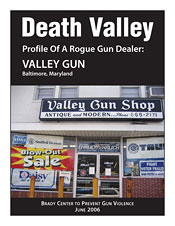 Sandy Abrams owned Valley Gun in Baltimore, which was ranked in the top 40 among 80,000 gun shops for supplying guns used in crimes. Guns from his store were linked to 483 crimes, including 41 assaults and 11 homicides from 1996 to 2000. In 1999, Abrams was first elected to the NRA Board of Directors despite having been cited by ATF in 1997 for failing to record the sale of at least 45 firearms as required by federal law.
Sandy Abrams owned Valley Gun in Baltimore, which was ranked in the top 40 among 80,000 gun shops for supplying guns used in crimes. Guns from his store were linked to 483 crimes, including 41 assaults and 11 homicides from 1996 to 2000. In 1999, Abrams was first elected to the NRA Board of Directors despite having been cited by ATF in 1997 for failing to record the sale of at least 45 firearms as required by federal law.
An ATF inspection in 1999 uncovered additional violations of federal law, and in September 2001, a follow-up inspection revealed 133 firearms missing from store inventory without proper records of sale, along with other violations of federal law. Nevertheless, in April 2002, Abrams was re-elected to the NRA Board.
In May 2003, ATF held another inspection and found massive violations of federal law. A total of 422 guns were missing from the shop – more than 27% of the store’s inventory – without required records of sale. ATF issued Abrams a Notice of Revocation of Valley Gun’s federal firearms license, citing more than 900 violations of federal law. Despite this lawless history, in 2005 Abrams was elected to the NRA Board for a third time.
Abrams never filed a theft report or an insurance claim, and federal agents assumed he sold the guns “off the books” without background checks, which is the largest single source (60%) of crime guns, according to the ATF.
When Abrams had his firearms license revoked in 2009 because he ran an “irresponsible gun shop” that “endangered the public by failing to account for hundreds of weapons”, the NRA re-elected him to its board yet again and came to his legal defense by loaning him one of the organization’s lobbyists to be his attorney.
Christopher Conte, the NRA’s Legislative Counsel and Richard E. Gardiner, former director of state and local affairs for the NRA, represented Abrams in a lawsuit against ATF seeking to reinstate the license for his shop.
Because federal enforcement laws have been so terribly weakened by NRA lobbying efforts, all ATF was ultimately able to do was revoke Sandy Abrams’ license. No federal criminal charges were ever brought. Moreover, in June 2006, in response to the NRA-backed lawsuit, the Bush Administration filed legal briefs stating that Abrams would be permitted to transfer hundreds of firearms from Valley Gun’s inventory to Abrams’ “personal collection”.
In March 2006, just days after a federal district court rejected Abrams’ request to continue operating as a gun dealer, NRA Legislative Counsel Gardiner testified in Congress in support of bill H.R. 5092, which would make it virtually impossible to revoke the licenses of lawbreaking gun shops like Valley Gun.
In 2010, after Valley Gun was shut down, Abrams was charged by Maryland with illegally selling weapons – including a Yugoslavian SKS assault rifle*, a Bushmaster XM-15 assault rifle (the same model used in the DC sniper shootings and later at Sandy Hook Elementary School), and a Remington semi-automatic assault rifle – to a criminal who used one of the guns to shoot at Baltimore County police. The purchaser, Keith Showalter, had been found guilty of violent crimes and had been fined for drug charges, and was therefore barred under Federal law from purchasing or possessing a firearm. Abrams was also charged for illegal possession of a fully automatic machine gun with a silencer. He received a five-year suspended prison sentence and one year of probation and was quietly resigned from the NRA board.
Domestic terrorism is defined by the FBI as acts dangerous to human life that violate federal or state law, appear intended to intimidate or coerce a civilian population and/or to influence the policy of a government by intimidation or coercion.
Supporting and defending the kind of serial legal violations that NRA Board member Sandy Abrams was found guilty of, such as providing hundreds of weapons to criminals, including murderers; intimidating gun owners and the general public with dire warnings about “jack-booted thugs” breaking down doors to disarm the citizenry and eradicate both constitutional rights and personal freedoms; and coercing legislators into either opposing gun-control laws or supporting bills intended to eviscerate existing gun laws by threat of loss of electoral funds or of funding of their opponents – these are the three necessary and sufficient elements of what the law defines as domestic terrorism.
As with many other purveyors of terrorist ideology, while the NRA does not engage in overt criminal or violent activity, its message has been adopted by many others who do, including the nearly 900 citizen militia groups and individuals like Timothy McVeigh, who was responsible for the death of 168 people (including 19 children) and injury to more than 680 others. It is no exaggeration to state that Wayne LaPierre is the Osama bin Laden of domestic terrorism.
One of his henchmen, NRA board member US Representative Don “bridge to nowhere” Young (R-Alaska), took the stage with radical militia leader Schaeffer Cox in 2011 and signed a declaration in direct contravention to the oath he swore to the United States government, which read:
“Let it be known that should our government seek to further tax, restrict or register firearms…thus impairing our ability to exercise the God-given right to self-defense that precedes all human legislation and is superior to it, that the duty of us good and faithful people will not be to obey them but to alter or abolish them.”
Schaeffer Cox, author of the Declaration and founder of the Alaska Peacemakers Militia, is currently serving 26 years in federal penitentiary for conspiracy to kill officers and employees of the United States, possession of an unregistered machine gun, hand grenades and silencers, and possession of a loaded grenade launcher.
There is no organization as large and powerful in the United States which more perfectly fits the legal definition of a domestic terrorism group than the “new” NRA. It’s past time that we name the NRA for what it has chosen to become and treat it as we would any other hate group or enemy of We the People.
Regardless of what each of us may believe about the encroachment of government into our lives, our inalienable rights and our freedoms, we must not confuse conscientious resistance with the propagation of hate speech and domestic terrorism.
——————————————————————————————————————————————————-
* I use the accurate term “assault rifle” that was first promulgated by the US gun industry to market military knock-offs to customers increasingly fascinated by the macho image of Rambo commandos. This civilian use is distinct from the military designation of “assault rifle” for close-quarter firearms capable of fully automatic firing, though typically restricted to choice of single-shot or 3-shot “burst” capacity. In civilian use, “machine gun” refers to fully automatic weapons.
To learn how these weapons have become a nearly essential element of school rampage shootings, see Ceremonial Violence – School Rampage Shootings.
In 2012, Florida passed the “Firearm Owner’s Privacy Act”, also called “Glocks vs. Docs”, which amounts to a gag order on pediatricians and family physicians, preventing them from asking patients about safe gun storage. Learn about this NRA-sponsored censorship:
 by Robert Riversong: may be reproduced only with attribution for non-commercial purposes
by Robert Riversong: may be reproduced only with attribution for non-commercial purposes
See also:
Lead, Crime & Societal Breakdown – A Cautionary Tale of Unintended Consequences
Guns, Race, the Law & Public Opinion – The Trayvon Martin, George Zimmerman Case
District of Columbia v. Heller – A Radical Decision that Created a Middle Path
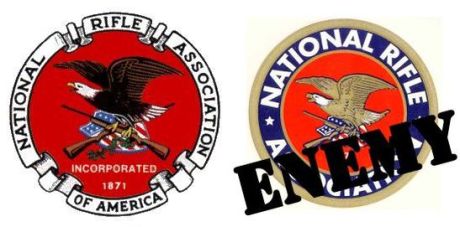
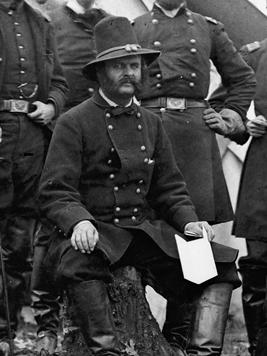

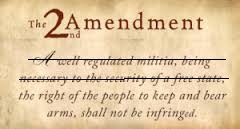
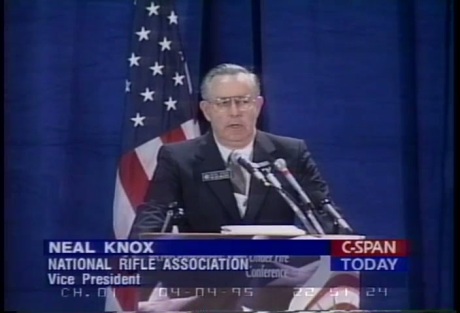
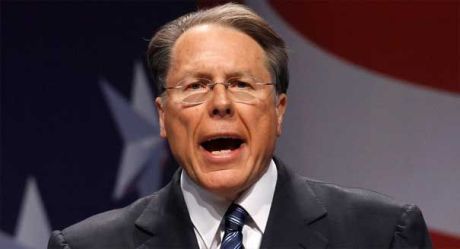

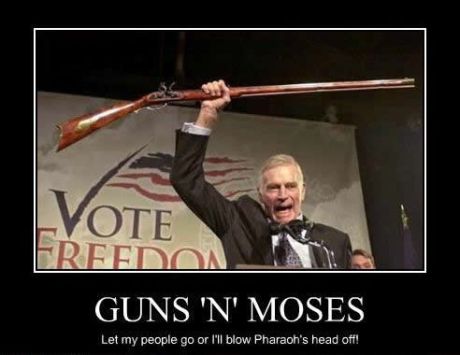
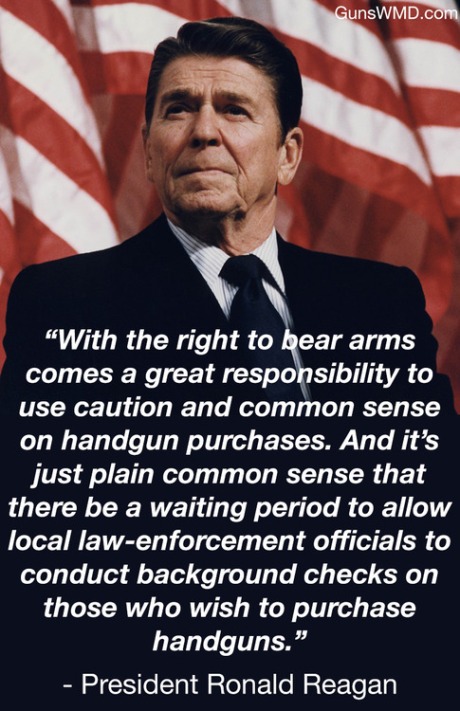
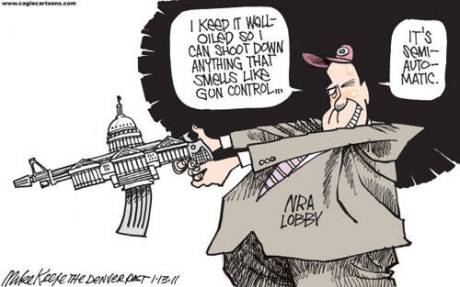
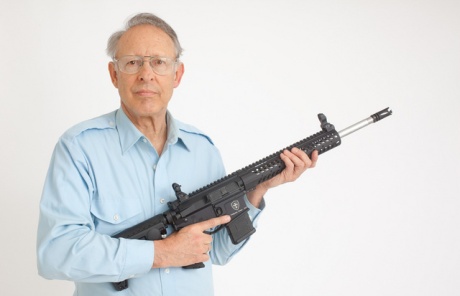
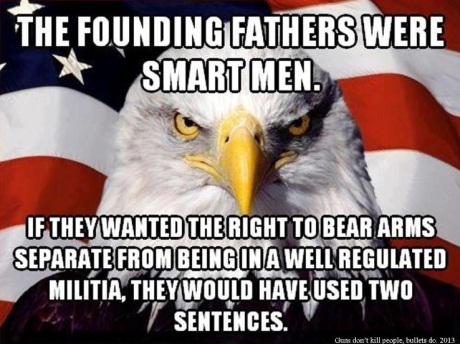
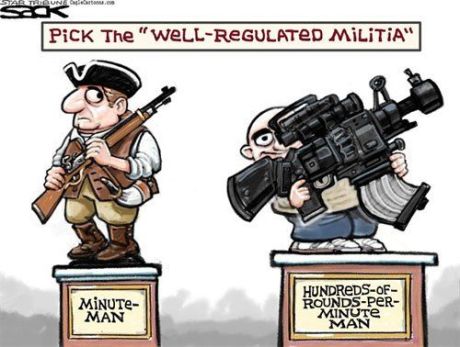
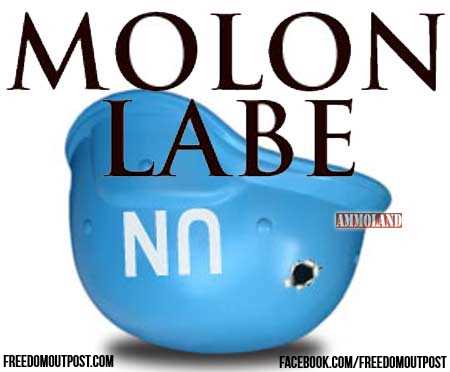
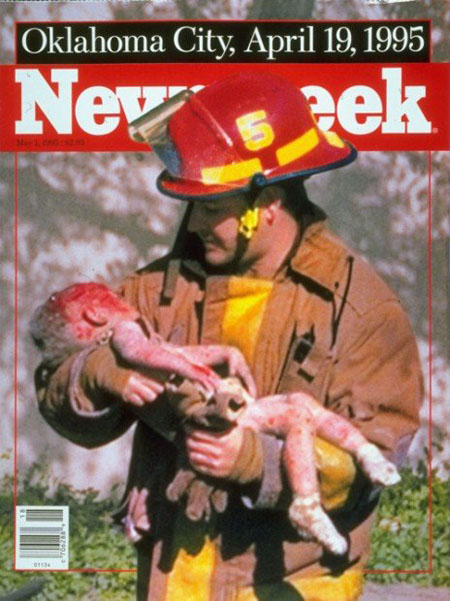
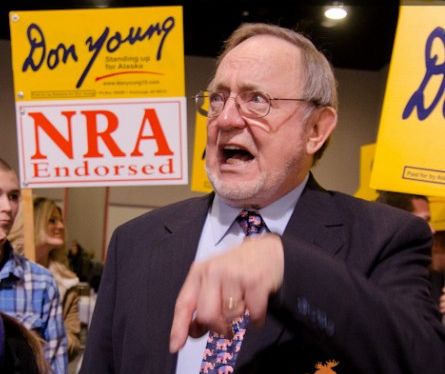
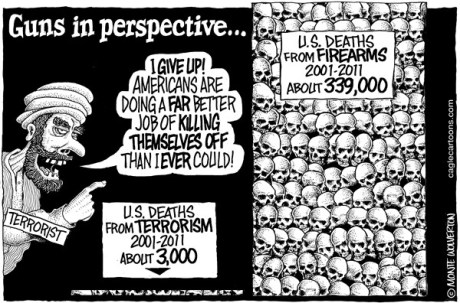
Excellent article, but far too complicated for the short attention span of those who are brainwashed by simplistic talking points propaganda of the Gun Industry.
This is packed with well thought out useful information! Thank you!
If they ban guns then they might as well ban aviation, locomotives, automobile, industrial equipment, power tool, sports, kitchen utensils, marine, power lines, and everything else that kill millions each year. Guns are a harmless hunk of metal and polymer. Humans are dangerous, without a human a gun can’t do anything but sit and collect dust. If you take guns from responsible legal owners how are we to defend ourselves from the criminals how have illegal guns. Banning guns won’t stop criminals from getting them, cause last I checked cocaine, meth, marijuana, under age drinking and smoke, drinking and driving, ect. is illegal but people still do it. If us legal gun owners had our rights taken what are we suppose to do when someone breaks into our house with a weapon to kill you, rape you, kidnap you or your children, rod all the things you’ve worked for in your life? I image it would be kinda hard to cal 911 with knife at you or your child’s throat or an illegal gun to their head. If you don’t like guns then don’t buy one, and stop trying to take others rights away from them just because you don’t like something.
I approved Daine’s comment as an example of the mindless fear-mongering that pervades “gun rights” arguments and NRA propaganda.
As this article is about the history and positions of the NRA and does not advocate any policy options in regards to gun ownership or possession, either this commenter did not bother to read it or read into it all the baseless fears that gun lobbies like the NRA propagate and are then parroted ad nauseam by others.
First, who is the “they” who people fear will ban guns? The federal government, state government, county or municipal government, the UN Agenda 21 One-World Conspiracy? The only attempt to ban handguns in recent years was in the District of Columbia, and that law was overturned in the DC v. Heller Supreme Court decision. All other proposed legislation has been about gun-control or gun-safety or bans on particularly lethal and unnecessary weapons such as semi-automatic assault rifles and large-capacity magazines.
Then comes the tired and tiring argument that other inanimate consumer items kill at greater rates than guns (though that’s no longer even true for motor vehicles, and not remotely true about any other item). This, of course, ignores the self-evident truth that only guns are designed to kill, while the lethality of other goods is a side effect of improper use or mechanical failure.
Next we are given the absurd nostrum that gun laws “take guns from responsible legal owners”, which is an oxymoron since citizens can lose guns only by breaking the law, or by exhibiting substantiated behavior that puts others at risk, such as mental instability or domestic violence. It also ignores the reality that every crime gun began as a legal sale – at least at the wholesale level. The ATF has traced 60% of crime guns to about 1400 federally-licensed gun dealers who are breaking the law (selling off the books, or “losing” a large amount of inventory, or by selling to obvious straw purchasers). It has been re-established that 40% of gun sales or transfers fall into the gun-show loophole or are between private individuals with no background check. These issues are what proposed regulations and legislation is aimed at preventing – NOT taking anything away from law-abiding citizens.
After all that, we have to suffer the counter-factual claim that only guns can adequately protect a family or home from criminal invasion. Yet every study shows that having a gun in the home INCREASES the risk of gun injury or death, as nearly half of all gun homicides are between relatives or acquaintances, a gun makes domestic violence far more lethal, and children and teens are at high risk of accident from unsecured firearms. And it ignores the fact that almost any other weapon, including a knife or a baseball bat, is at least as effective in deterring a home invader as a gun – and the safest action is doing nothing or hiding.
Finally, we are treated with the bumper sticker slogan: “If you don’t like guns then don’t buy one” – as if the safety of society should be dependent on the individual likes and dislikes of its members rather than on research-based safety laws that treat us all equally.